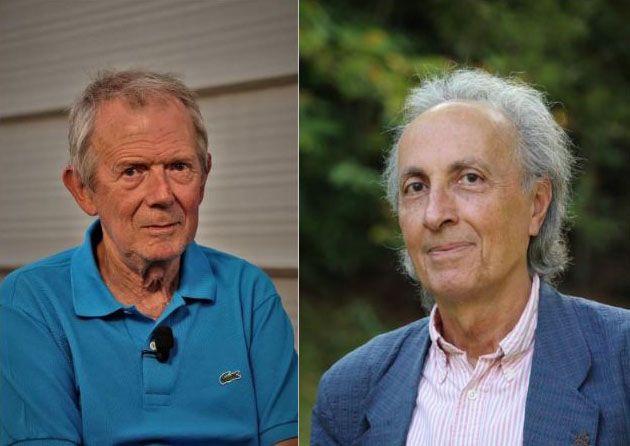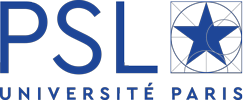Two CNRS 2017 Gold Medals awarded to physicists Alain Brillet and Thibault Damour
Physicists Alain Brillet (ESPCI Paris) et Thibault Damour (ENS) have been awarded two Gold Medals for their major contributions to the detection of gravitational waves.

On 11 February 2016, an international team announced the first direct detection of gravitational waves. These tiny ripples in spacetime, produced by the final spinning 'dance' of two black holes on the point of merging, were captured on 14 September 2015 by the twin LIGO2 detectors located in the US. It required several months of analyses by the scientists at LIGO and their colleagues in the Virgo collaboration (formed around the eponymous European detector) to confirm the existence of gravitational waves, a century after they were predicted by Albert Einstein in his general theory of relativity. Today, by awarding two Gold Medals to Thibault Damour (ENS) and Alain Brillet (ESPCI Paris), the CNRS pays tribute to the excellence of the theoretical and instrumental work that made this direct detection possible.
Alain Brillet
Born on 30 March 1947 at Saint-Germain-en-Laye (France), Alain Brillet received his engineering degree from ESPCI in 1970. He joined the CNRS the same year as a research engineer at the Laboratoire de l'Horloge Atomique in Orsay, where he defended his doctoral thesis in 1976. Once back in France after a post-doctorate in the team of John Hall (2005 Nobel Prize in Physics) in Boulder (Colorado, USA), he was appointed senior researcher by the CNRS in 1982. Together with the Italian scientist Adalberto Giazotto, he devoted himself to the design and development of the Virgo gravitational wave detector, now installed at Cascina, near Pisa (Italy). From 1989 to 2003, he first headed and then jointly led the consortium formed around this major instrument. From 2008, he devoted his time to the design of the optics and laser system of Advanced Virgo, a next-generation detector. He is currently senior researcher emeritus at the CNRS, assigned to the Artemis laboratory (CNRS/Université Nice Sophia Antipolis/Observatoire de la Côte d'Azur). Brillet is a Knight of the Legion of Honor (2005) and in 2016 was awarded the Ampère Prize of the French Academy of Sciences for his work. As a member of the LIGO-Virgo collaboration, he also received the Special Breakthrough Prize in Fundamental Physics.
Thibault Damour
Thibault Damour, born on 7 February 1951 in Lyon, joined the École Normale Supérieure in 1970. He passed the 'agrégation' (France's highest teaching diploma) in physics in 1974, and in the same year defended his doctoral thesis in theoretical physics. After two years at Princeton University (US) and carrying out his National Service at the Centre d'Etudes Théoriques de la Détection et des Communications, he joined the CNRS Department of relativistic astrophysics and cosmology at the Observatoire de Paris in 1977. Since 1989, he has been a tenured professor at the Institut des Hautes Études Scientifiques, at Bures-sur-Yvette, near Paris. World famous for his innovative work on black holes, pulsars, gravitational waves and quantum physics, he is an expert at popularizing science, through his lectures and books, including a comic strip on quantum physics. A member of the French Academy of Sciences and of the American Academy of Arts and Sciences, laureate of the CNRS Bronze Medal (1980) and the Einstein Medal (1996), and a Knight of the Legion of Honor (2010), he is also one of the seven visiting scientists in the LIGO-Virgo team who have been awarded the 2016 Special Breakthrough Prize in Fundamental Physics.
